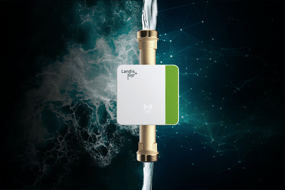 The selection of the most suitable communications technology for a smart metering solution is an important step when building a smart metering infrastructure. Communication technology has evolved dramatically since the first installations of ‘smart’ meters, and so did the expectation regarding data availability, and functionality around smart metering. For a long time it was sufficient to read out data once a day for monthly invoicing, but today expectations are often moving in the direction of near real-time availability - for example, to enable DSO to provide load profile and consumption data in a customer portal, have power quality data available for analysis at short intervals, or use the smart meter infrastructure as replacement for ripple control load management.
The selection of the most suitable communications technology for a smart metering solution is an important step when building a smart metering infrastructure. Communication technology has evolved dramatically since the first installations of ‘smart’ meters, and so did the expectation regarding data availability, and functionality around smart metering. For a long time it was sufficient to read out data once a day for monthly invoicing, but today expectations are often moving in the direction of near real-time availability - for example, to enable DSO to provide load profile and consumption data in a customer portal, have power quality data available for analysis at short intervals, or use the smart meter infrastructure as replacement for ripple control load management.
Communication technology is not just a simple question of how the data transfer from periphery to system is accomplished. New technologies such as NB-IoT promise lower communication cost over the entire life cycle, but also standardization and simplification of device integration, which will simplify the system landscape of utilities and drive the convergence of systems in the long run.
Throughout Europe, PLC technologies have been dominant in the first wave of smart meter rollouts and still has its raison d'être today in many cases. The most suitable communication technology, or the most suitable combination, shall always be considered case-by-case depending on the DSO’s needs and available infrastructure in the country or supply area. LTE CAT NB1 (NB-IoT) and LTE CAT M1 are new cellular technologies developed specifically for the Internet of Things (IoT) communications. They are operated by telecom service providers and based on the same infrastructure as consumers’ mobile communications but optimized for “machine to machine” communication (M2M) rather than voice and respective data volumes.
We take a look at these new cellular technologies, how they work and which benefits they can bring.
Benefits of LTE CAT NB1 and LTE CAT M1
LTE CAT NB1 and LTE CAT M1 have been developed to meet the demands of the M2M / IoT world and have therefore some perfect characteristics for these applications:
Reliability and coverage
LTE CAT NB1 and LTE CAT M1 operate on the same networks as common mobile devices, and those networks are maintained by telecom operators who have a strong interest in guaranteeing high availability of communication services – and this strengthens the reliability of the solution. Both technologies LTE CAT NB1 and LTE CAT M1 offer superior coverage also in difficult conditions like basements and as a P2P technology it operates well also in rural areas with lower meter density.
Cost-efficiency and simplicity
Installation and deployment are simple. Unlike PLC devices, cellular devices communicate independently from other devices, so an addition or removal of a meter does not have an impact on the overall topology and network stability. When adding a new meter, it can start communicating immediately and there is no need to wait for the surrounding installations to be finalized before the communication starts to work.
In the early days of smart meter for commercial, industrial and grid applications, when the communication costs for P2P-connection were still considerable, the looping of additional meters via RS-485 communication was very popular. Today, under NB-IoT, there is no reason for that anymore. In terms of communication cost over the lifetime of the meter, there is no difference whether the data is transferred from each device which is simply connected to the system or via a master device or gateway that collects the data before sending. The latter, however, has the clear disadvantage of higher installation cost and causes real challenges for modern smart grid applications.
Future-proof
LTE CAT NB1 and LTE CAT M1 are an integral part of teleoperators’ 5G strategy. In that sense, utilities can be confident that the technology will be in place for the entire lifetime of their investment. Direct connection also leaves room for future use-cases. Their -architecture allows upgradeability of devices and event-driven communication. The latter is key, if you want send data updates, say in 10’ intervals, or should you ever want to do so in future.
Security
Last, but not least, 3GPP security standards apply to both LTE CAT NB1 and LTE CAT M1 and are inherited from the security levels defined in LTE. The proven security features support confidentiality, availability and integrity – preventing e.g. unauthorized access, interruption and data manipulation. All user data can be secured through encryption when transmitted over the communication channel, in addition to which, the sending and receiving ends are also authenticated.
Key take aways
Due to its scalability and robust, cost-effective communication, LTE CAT NB1 and LTE CAT M1 are considered a perfect fit for smart metering and more IoT use cases in residential and industrial environments. However, the speed of data of LTE CAT NB1 and LTE CAT M1 has been defined with M2M-needs in mind - and is therefore comparably low. Based on our extensive experience of smart meter rollout projects, we can therefore say there is no communication technology that would be superior compared to others in all circumstances. The optimal way forward is to be defined case by case, and most commonly it is a hybrid solution where the primary technology is completed with another communication type.
For further detailed insights into NB-IoT and LTE-M (CAT-M1), download our White Paper:
"NB-IoT in AMI: What Does the New Communication Technology Bring to Smart Metering?"
Do you have questions about this concept?





